Top 8 Yoga Poses for Weight Gain

Yoga is widely regarded as a reliable and holistic approach to nurture and sculpt the body. While many people associate yoga with weight loss, some individuals struggle with gaining weight in a healthy manner. Yoga offers solutions to various health issues, including weight gain challenges, by addressing problems such as sluggish metabolism, poor appetite, and digestive concerns. Through a series of diverse and effective yoga asanas, it promotes optimal blood and oxygen circulation, facilitating the distribution of essential nutrients throughout the body. In this article, we'll explore several yoga poses that can help you naturally gain weight while offering additional health benefits.
Chakrasana (Wheel Pose)
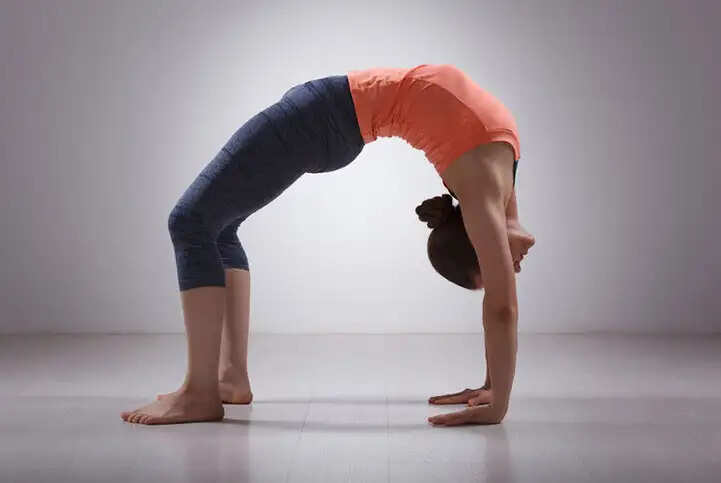
Image source: https://www.artofliving.org
Chakrasana enhances blood circulation throughout the body, while also increasing spine flexibility. This pose strengthens the arms, shoulders, hips, thighs, and wrists, promoting hormonal balance and regulating bodily functions.
How to perform it: Start by lying on your back and place your hands behind your shoulders. Gradually lift your body using your palms and feet, forming a graceful arch. Maintain this position comfortably while focusing on your breath. Gently lower your body and take a short break before moving on to the next exercise.
Tip: Avoid excessive force during this pose to prevent undue strain on your arms.
Dhanurasana (Bow Pose)
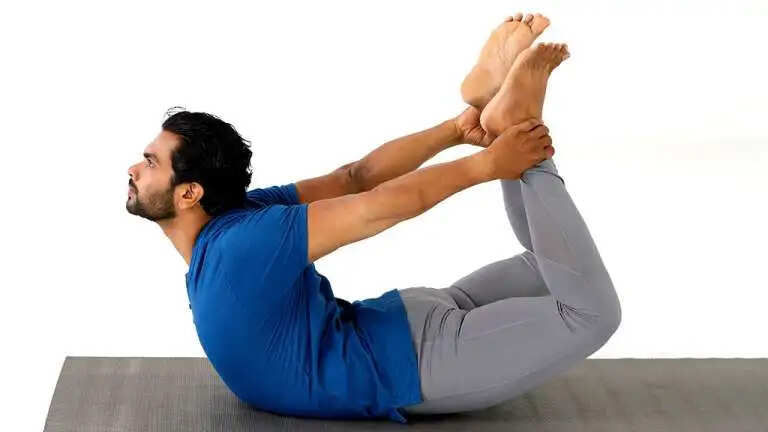
Image source: https://www.keralatourism.org
Dhanurasana targets the back and abdominal muscles, massages the thyroid gland, enhances digestion, and stimulates the reproductive organs. This pose also alleviates stress, reduces fatigue, and stretches the muscles.
How to do it: Begin by lying on your stomach with your feet apart. Bend your knees and reach behind to hold your ankles, lifting your legs and chest upwards. Maintain this position for 30-60 seconds while focusing on deep breathing.
Tip: Individuals with heart issues or high blood pressure should avoid this asana.
Bhujangasana (Cobra Pose)
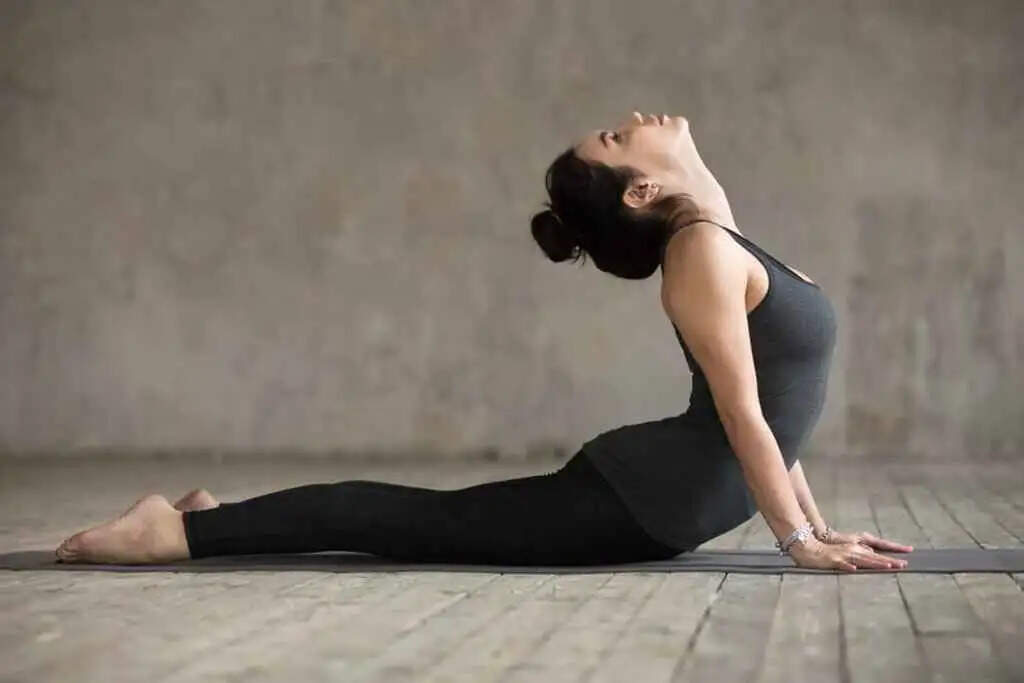
Image source: https://rishikeshashtangayogaschool.com
Bhujangasana stretches the muscles in the shoulders, back, abdomen, and neck, relieving stress. It promotes digestion, enhances metabolism, and improves blood and oxygen circulation, ensuring better nutrient absorption.
How to do it: Lie flat on your stomach with your legs extended and feet facing down. Place your palms flat on the surface, elbows close to your sides. Inhale deeply and lift your chest and abdomen while supporting your weight with your palms. Ensure your navel touches the floor. Slowly exhale and return to the starting position, repeating this motion 4-5 times.
Tip: Avoid spreading your legs during this asana to prevent potential lower back injuries.
Vajrasana (Diamond/Thunderbolt Pose)
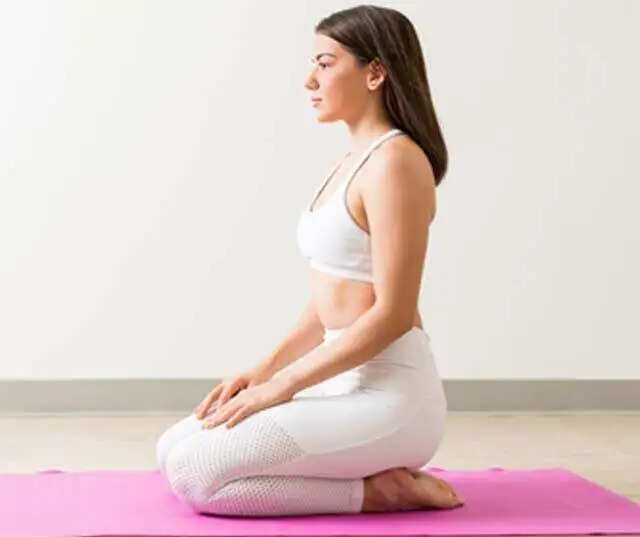
Image source: https://www.femina.in
Vajrasana calms the mind and strengthens the thighs, calves, and abdominal muscles. It improves blood circulation, aids digestion, relieves constipation, and boosts appetite.
How to do it: Practice this asana on a yoga mat. Position your thighs on your calf muscles with toes pointing backward. Maintain an erect back and neck, placing your hands on your thighs while concentrating on deep breathing. Hold this pose for 5-10 minutes before stretching out, exhaling, and relaxing.
Tip: Individuals with recent knee, ankle, or joint injuries or severe knee pain should avoid Vajrasana.
Sarvangasana (Shoulder Stand)
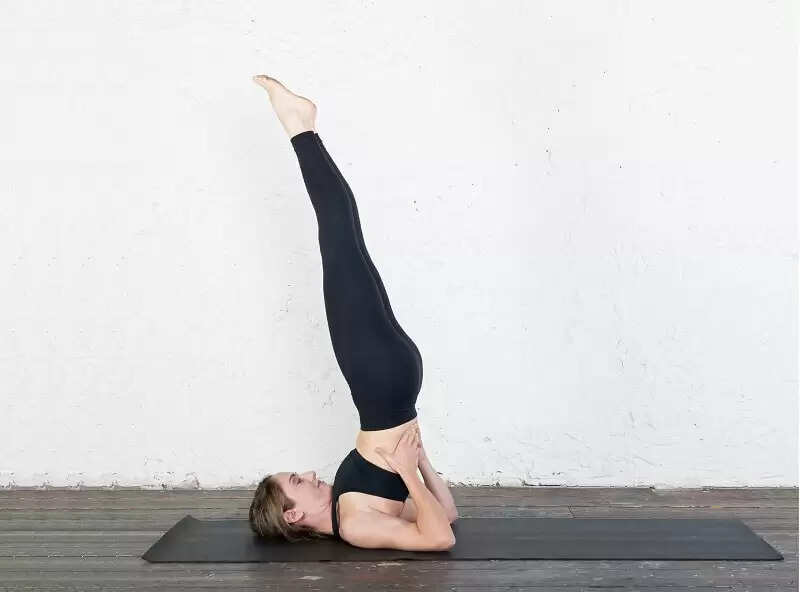
Image source: https://www.arhantayoga.org
Sarvangasana promotes healthy blood circulation, relieves indigestion and constipation, and enhances spine flexibility. It particularly benefits thyroid gland functionality.
How to do it: Lie on your back with legs together and hands by your sides. Inhale deeply, lifting your hips and legs to a 30° angle and then to a 90° angle with the support of your hands on your lower back. Maintain this posture for 30-60 seconds.
Tip: People with high blood pressure, glaucoma, or other eye conditions should avoid this asana.
Matsyasana (Fish Pose)
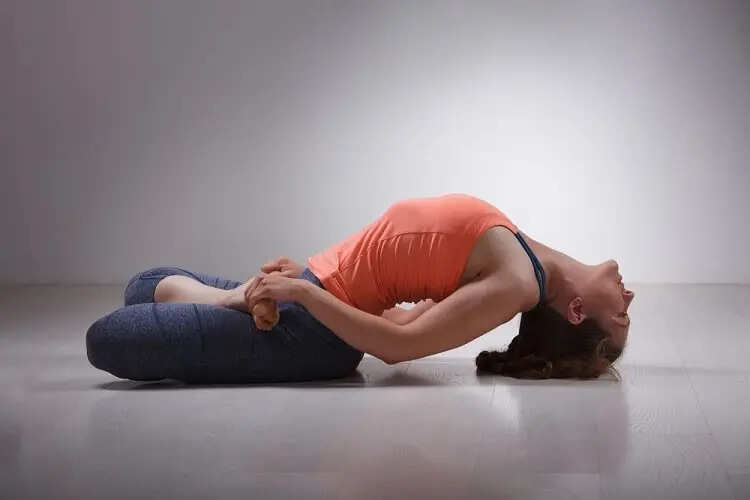
Image source: https://www.healthunbox.com
Matsyasana elongates the muscles in the abdomen, chest, and lower back. It relieves tension and stress, improves the functioning of the digestive, reproductive, and cardiovascular systems, and supports weight gain.
How to do it: Begin by lying on your back with your feet together and hands alongside your body. Lift your body and gently arch your back until your head touches the ground. Focus on inhaling and exhaling while holding this position for a few seconds before returning to the starting position. Practice this asana early in the morning, several hours after a meal.
Tip: Avoid Matsyasana if you have abnormal blood pressure, neck injuries, migraines, spondylitis, are pregnant, or suffer from heart ailments.
Pavanamuktasana (Wind Relieving Pose)
Pavanamuktasana is highly effective for addressing digestion issues such as acidity, indigestion, constipation, and flatulence. It also benefits menstrual problems, enhances reproductive organs, and strengthens the lower back muscles.
How to do it: Start by lying on your back, then lift your legs and bend your knees. Lift your upper body until your thighs touch your stomach, hugging your knees. Lock your fingers and remain in this position for 20-30 seconds. Breathe rhythmically and release the pose slowly.
Tip: Avoid overstretching by pulling your thighs too close to your body, as it may cause strain.
Savasana (Corpse Pose)
Savasana is typically practiced at the end of a yoga session to relax and rejuvenate the mind and body. It encourages the absorption of nutrients and offers various health benefits, including reducing blood pressure, alleviating fatigue, and relieving stress.
How to do it: Lie on your back with your legs apart and hands slightly away from your torso. Relax your entire body, including your face. Breathe naturally and evenly, staying in this position for 5-10 minutes.
Tip: If you have lower back issues, consider placing a pillow or bolster under your knees during Savasana.
Incorporating these yoga poses into your routine can help you achieve healthy weight gain while enjoying their numerous other health benefits. Remember to practice yoga under the guidance of a qualified instructor, especially if you are new to these poses or have any underlying health conditions.

